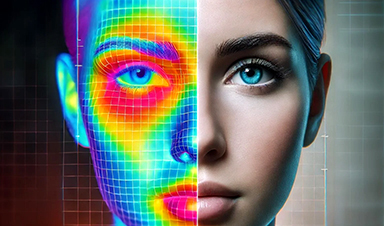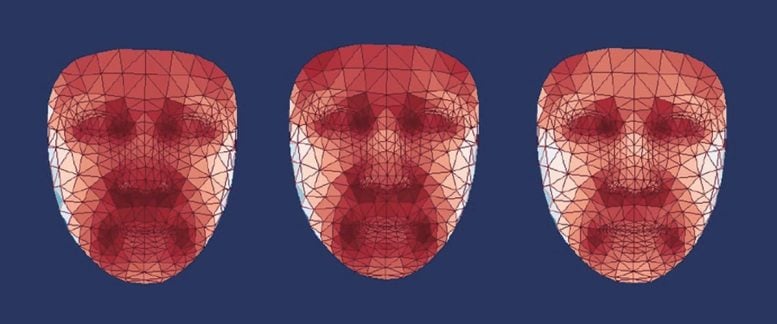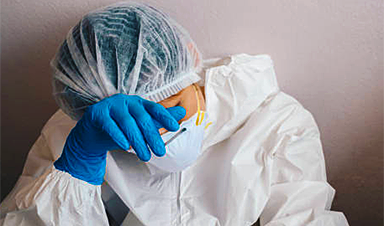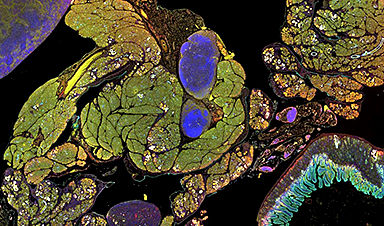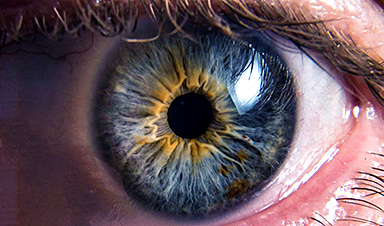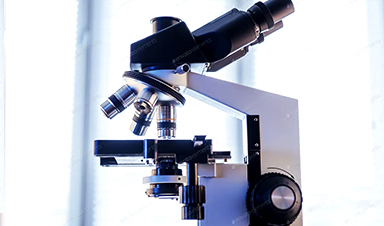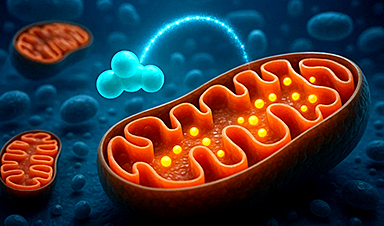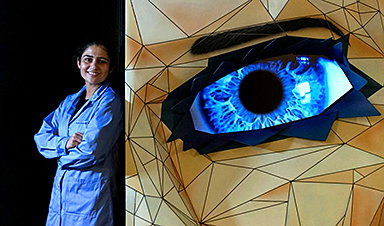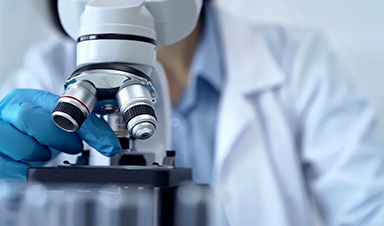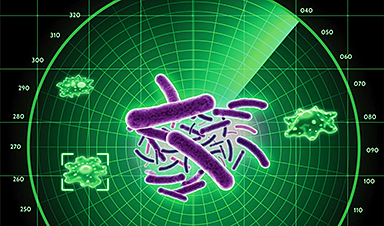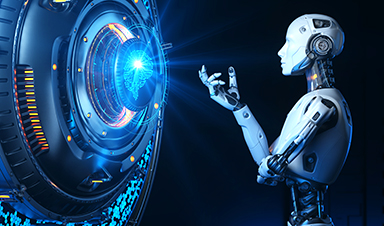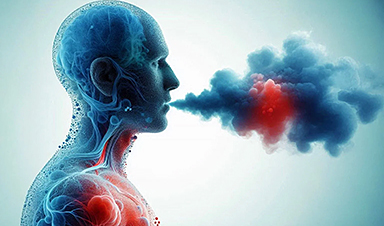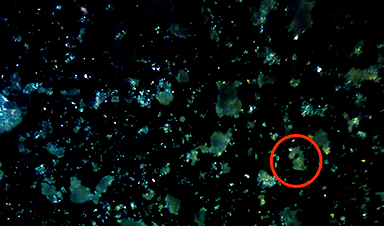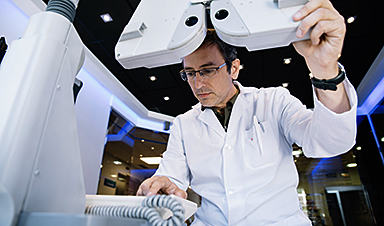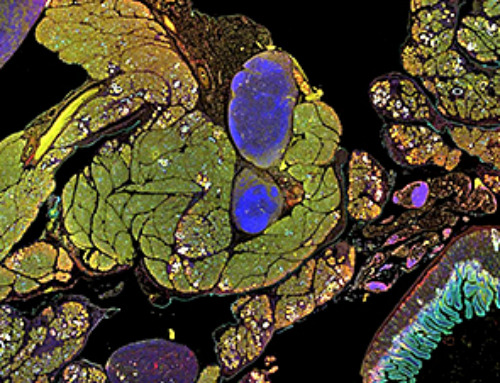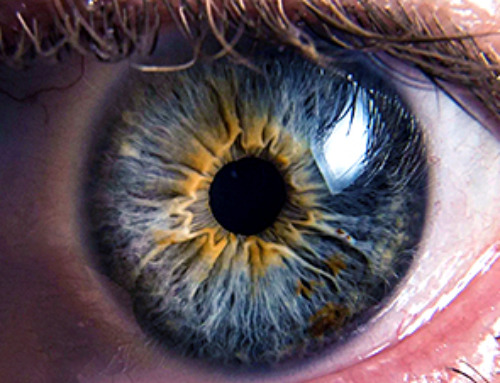Researchers have found that different facial temperatures correlate with chronic illnesses like diabetes and high blood pressure, and these can be detected using AI with thermal cameras.
They highlight the potential of this technology for promoting healthy aging by using thermal facial imaging to predict a person’s health status and biological age. The study also found that regular physical activities like jumping rope can decrease one’s thermal age, suggesting a possible link between exercise and thermal signs of aging.
A colder nose and warmer cheeks may be a telltale sign of rising blood pressure.
Researchers discovered that temperatures in different face regions are associated with various chronic illnesses, such as diabetes and high blood pressure. These temperature differences are not easily perceptible by one’s own touch but can instead be identified using specific AI-derived spatial temperature patterns that require a thermal camera and a data-trained model. The results were published recently in the journal Cell Metabolism. With further research, doctors could one day use this simple and non-invasive approach for early detection of diseases.
Average facial temperatures of three aging-status groups among women 50-60 years old. Credit: Zhengqing Yu and Jing-Dong J Han
Potential of Thermal Facial Imaging
“Aging is a natural process,” says Jing-Dong Jackie Han, the paper’s corresponding author at Peking University in Beijing. “But our tool has the potential to promote healthy aging and help people live disease-free.”
The team had previously used 3D facial structure to predict people’s biological age, which indicates how well the body is aging. Biological age is closely related to the risk of diseases, including cancer and diabetes. They were curious if other features of the face, such as temperature, could also predict aging rate and health status.
Age and Health Indicators Through Thermal Analysis
Han and her colleagues analyzed facial temperatures of more than 2,800 Chinese participants between the ages of 21 and 88. Then, the researchers used the information to train AI models that could predict a person’s thermal age. They identified several key facial regions where the temperatures were significantly related to age and health, including the nose, eyes and cheeks.
The team found the temperature of the nose decreases with age at a rate faster than other parts of the face, meaning people with warmer noses have a younger thermal age. At the same time, temperatures around the eyes tend to increase with age.
The team also found that people with metabolic disorders such as diabetes and fatty liver disease had faster thermal aging. They tended to have higher eye area temperatures than their healthy counterparts of the same age. People with elevated blood pressure also had higher cheek temperatures.
Exploring Thermal Aging and Disease Connections
By analyzing participants’ blood samples, the team revealed that the increase in temperatures around the eyes and cheeks was mainly because of an increase in cellular activities related to inflammation, such as repairing damaged DNAs and fighting infections. The increase in these activities led to a rise in temperatures in certain facial regions.
“The thermal clock is so strongly associated with metabolic diseases that previous facial imaging models were not able to predict these conditions,” Han says.
Thermal Imaging and Physical Activity
Due to this connection, the team set out to test if exercise could influence thermal age. They asked 23 participants to jump rope for at least 800 times daily for two weeks. To the team’s surprise, these participants reduced their thermal age by five years after just two weeks of exercise.
Next, the team wants to explore if they can use thermal facial imaging to predict other diseases, such as sleeping disorders or cardiovascular problems.
“We hope to apply thermal facial imaging in clinical settings, as it holds significant potential for early disease diagnosis and intervention,” Han says.
Reference: “Thermal facial image analyses reveal quantitative hallmarks of aging and metabolic diseases” by Zhengqing Yu, Yong Zhou, Kehang Mao, Bo Pang, Kai Wang, Tang Jin, Haonan Zheng, Haotian Zhai, Yiyang Wang, Xiaohan Xu, Hongxiao Liu, Yi Wang and Jing-Dong J. Han, 2 July 2024, Cell Metabolism.
DOI: 10.1016/j.cmet.2024.05.012
This work was supported by the National Natural Science Foundation of China and the Ministry of Science and Technology of the People’s Republic of China.
News
Studies detail high rates of long COVID among healthcare, dental workers
Researchers have estimated approximately 8% of Americas have ever experienced long COVID, or lasting symptoms, following an acute COVID-19 infection. Now two recent international studies suggest that the percentage is much higher among healthcare workers [...]
Melting Arctic Ice May Unleash Ancient Deadly Diseases, Scientists Warn
Melting Arctic ice increases human and animal interactions, raising the risk of infectious disease spread. Researchers urge early intervention and surveillance. Climate change is opening new pathways for the spread of infectious diseases such [...]
Scientists May Have Found a Secret Weapon To Stop Pancreatic Cancer Before It Starts
Researchers at Cold Spring Harbor Laboratory have found that blocking the FGFR2 and EGFR genes can stop early-stage pancreatic cancer from progressing, offering a promising path toward prevention. Pancreatic cancer is expected to become [...]
Breakthrough Drug Restores Vision: Researchers Successfully Reverse Retinal Damage
Blocking the PROX1 protein allowed KAIST researchers to regenerate damaged retinas and restore vision in mice. Vision is one of the most important human senses, yet more than 300 million people around the world are at [...]
Differentiating cancerous and healthy cells through motion analysis
Researchers from Tokyo Metropolitan University have found that the motion of unlabeled cells can be used to tell whether they are cancerous or healthy. They observed malignant fibrosarcoma [...]
This Tiny Cellular Gate Could Be the Key to Curing Cancer – And Regrowing Hair
After more than five decades of mystery, scientists have finally unveiled the detailed structure and function of a long-theorized molecular machine in our mitochondria — the mitochondrial pyruvate carrier. This microscopic gatekeeper controls how [...]
Unlocking Vision’s Secrets: Researchers Reveal 3D Structure of Key Eye Protein
Researchers have uncovered the 3D structure of RBP3, a key protein in vision, revealing how it transports retinoids and fatty acids and how its dysfunction may lead to retinal diseases. Proteins play a critical [...]
5 Key Facts About Nanoplastics and How They Affect the Human Body
Nanoplastics are typically defined as plastic particles smaller than 1000 nanometers. These particles are increasingly being detected in human tissues: they can bypass biological barriers, accumulate in organs, and may influence health in ways [...]
Measles Is Back: Doctors Warn of Dangerous Surge Across the U.S.
Parents are encouraged to contact their pediatrician if their child has been exposed to measles or is showing symptoms. Pediatric infectious disease experts are emphasizing the critical importance of measles vaccination, as the highly [...]
AI at the Speed of Light: How Silicon Photonics Are Reinventing Hardware
A cutting-edge AI acceleration platform powered by light rather than electricity could revolutionize how AI is trained and deployed. Using photonic integrated circuits made from advanced III-V semiconductors, researchers have developed a system that vastly [...]
A Grain of Brain, 523 Million Synapses, Most Complicated Neuroscience Experiment Ever Attempted
A team of over 150 scientists has achieved what once seemed impossible: a complete wiring and activity map of a tiny section of a mammalian brain. This feat, part of the MICrONS Project, rivals [...]
The Secret “Radar” Bacteria Use To Outsmart Their Enemies
A chemical radar allows bacteria to sense and eliminate predators. Investigating how microorganisms communicate deepens our understanding of the complex ecological interactions that shape our environment is an area of key focus for the [...]
Psychologists explore ethical issues associated with human-AI relationships
It's becoming increasingly commonplace for people to develop intimate, long-term relationships with artificial intelligence (AI) technologies. At their extreme, people have "married" their AI companions in non-legally binding ceremonies, and at least two people [...]
When You Lose Weight, Where Does It Actually Go?
Most health professionals lack a clear understanding of how body fat is lost, often subscribing to misconceptions like fat converting to energy or muscle. The truth is, fat is actually broken down into carbon [...]
How Everyday Plastics Quietly Turn Into DNA-Damaging Nanoparticles
The same unique structure that makes plastic so versatile also makes it susceptible to breaking down into harmful micro- and nanoscale particles. The world is saturated with trillions of microscopic and nanoscopic plastic particles, some smaller [...]
AI Outperforms Physicians in Real-World Urgent Care Decisions, Study Finds
The study, conducted at the virtual urgent care clinic Cedars-Sinai Connect in LA, compared recommendations given in about 500 visits of adult patients with relatively common symptoms – respiratory, urinary, eye, vaginal and dental. [...]
